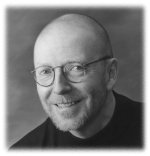Our people lived as part of everything. We were so much a part of nature, we were just like the birds, the animals, the fish. We were like the mountains. Our people lived that way. We knew there was an intelligence, a strength, a power, far beyond ourselves. We knew that everything here didn’t just happen by accident.
~ David Elliott Sr. (Saltwater People, School District 63 (Saanich, 1990)
Last year I had the privilege of hearing First Nation elder STOLȻEȽ ( John Elliot) of the WASÁNEĆ (Saanich) territory address the 16th Annual APH Conference in Victoria, B.C. He spoke reverently of the stories that were passed down to him about the land and sea and animals and the values to live by.
I was moved by his dedication to his people and by the importance he places on the preserving and recording of their stories. Too often I find myself caught up in the mechanics of my work as a personal historian. There’s marketing to do, blog articles to write, and deadlines to meet. I forget about the sacredness of our work. And by sacred I don’t mean religious. I mean knowing someone deeply, being touched by our common humanity, and venerating the interconnectedness of all life.
What can we do to rekindle the “sacred” in our work? Here are some thoughts.
Begin with our elders.
We need to connect regularly with our own past and show reverence for our elders. This might mean ending or starting each day with some personal expression of remembrance and gratitude for family members who hold a special place in our hearts. It could mean being mindful of the elders in our community and extending a smile or helping hand.
Make time for reflection.
We need to take time out from our busyness for reflection. We need to connect to our sacred moments. Find a space where you can sit quietly and recall a sacred moment in your life. Remember what was happening and how it felt. Let that moment wash over you.
Listen for The connections.
There’s a Bantu expression, Ubuntu, which translates as I am because you are; you are because I am. It speaks to our interconnectedness as human beings. When I’m working with clients, I’m aware that some part of their stories touches my own.
Create A personal belief statement.
We need to find a statement that gets to the heart of what we do as personal historians. It’s not just words to use in a tag line but a touchstone that can remind us of why this work is sacred. Start by writing, “I am a personal historian because I believe that…”. Play around with phrases until you have an Ah-Ha! moment. For me that moment came when I wrote, “I am a personal historian because I believe that preserving memories is an act of love.” Whenever I lose my way, I try to remember that statement and why I’m doing this work.
Write it. just don’t think it.
We know how much we learn from listening to our clients’ stories. But how many of us have actually told our clients this in writing? Too often I’m guilty of not taking the time to pen a thank you note that acknowledges the wisdom that I’ve gained from my clients.
keep a “thank you” file.
I have a file where I keep the letters of appreciation I’ve received from clients and their families over the years. It also includes excerpts from personal histories that particularly touch me. When I need a pick-me-up, I go to that file and read through the collection. It reminds me of why I do this work and reconnects me to the sacred.
We do not believe in ourselves until someone reveals that deep inside us something is valuable, worth listening to, worthy of our trust, sacred to our touch.
~ e. e. cummings
Photo by Cornelia Kopp
If you enjoyed this post, get free updates by email.






Pingback: Notable Blogs 11/19/2010 « Dreaming the World
Great piece, Dan. Thanks for the encore. The Personal Belief Statement is a great idea. Not something just to think about, but to put on paper. Love the e.e.cummings quote. He’s one of my favorites and this statement really gets to the heart of things.
Judith
@Judith. Thanks, Judith. Glad you liked this Encore! post. ee cummings is one of my favorites too.
Thanks, Dan. As usual, you hit the mark.
Susan Luccini
@Susan Luccini. Thanks for taking the time to read my post and add this great comment.